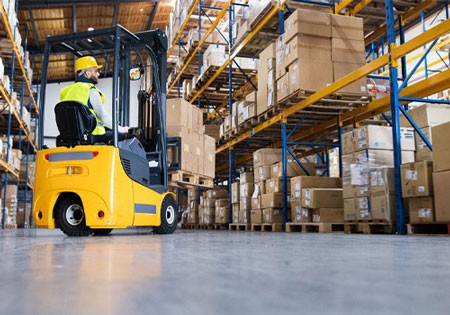SWEATING SLAB SYNDROME SUMMARY
Wet floors of any kind and especially sweating concrete are not only unsightly, but they can also be extremely dangerous. You of course owe it to your customers, suppliers and employees to keep your entire environment safe and comfortable, so floors are a good place to start.
Besides the obvious safety concerns, concrete sweating slabs:
- Can be dangerous for equipment especially material handling equipment
- Often require those unsightly yellow “Wet Floor” signs
- May cause damage to containers and products
- Can subject you and your company to potential lawsuits
- May cause customers to avoid your place of business
- Send a message that there may be other problems
- Are a poor reflection on how you conduct business
- May result in lost business due to people avoiding wet areas
- May cause loss in productivity due to excessive time mopping floors
Concrete Sweating Slab Syndrome
Industry experts refer to the problem as “sweating slab syndrome.” As one concrete industry website describes it, sweating slab syndrome (SSS) forms when a building has poor climate control and poor air circulation. Several companies across the country have reported serious incidents where equipment slid across floors, damaging containers and product and putting workers’ safety at risk.
In this formal definition, “Sweating Slab Syndrome (SSS) is a phenomenon where moisture intermittently develops on the surface of an interior concrete slab.” Experts elaborate by stating that “SSS can increase the slipperiness of the concrete surface and pose a serious risk to the safety of workers and material transport operations.”
In at least one case, a loaded fork truck . . . slid off a loading dock . . . into the path of an oncoming trailer. Customers reported that stored product was “damaged or destroyed by sliding transport equipment.”
On a more hopeful note, although SSS is a serious and often challenging phenomenon to diagnose and correct, solutions do exist.
What Causes Sweating Slabs and Concrete Sweating
- Dew point condensation – warm humid air contacting a cold surface
- Poor air circulation and hot spots or cold spots within the building
- Rapid increases in ambient temperature and changes in relative humidity
- Salt deposits on the concrete itself due to improper installation of vapor barriers
- Poor porosity of the concrete floor
- Frequent changes in temperatures and humidity
- Malfunctioning and improperly installed doors
- Employees and others either leaving doors open or propping them open
- Bay doors that are often opened and closed
- Malfunctioning equipment like HVAC or condensers of any kind
How to Prevent Sweating Concrete Floor Syndrome?
The experts at Concrete Construction suggest the following remedies:
- Use a commercial concrete floor cleaning agent to remove salt deposits
- Install fans that recirculate the air and increase surface evaporation
The patented Air Pear® was first introduced in early 2000 and were originally designed for air destratification and for redirecting air out of hot and cold pockets in high ceiling buildings.
Since then, the fans have been used in all types of buildings and all types of industries to move air and are especially helpful in reducing condensation on concrete sweating slabs in:
- Distribution Centers
- Restaurants
- Grocery Stores
- Cold Storage
- Food Preparation
- Warehouses and Other Storage Facilities
- Big Box Stores
- Retail and Wholesale of All Kinds
- Production Environments
- Manufacturing Shop Floors
How To Keep Concrete Floors From Sweating; Means Better Productivity and More Business.
Have you ever noticed that when there is water on the floor, customers avoid the immediate area and when employees are constantly having to mop up water from sweating slabs and sweating concrete, they have less time to service customers, stock shelves and do what you are paying them to do? Airius can help. Click here to contact us, or click here to see how a major distribution center solved their sweating slab problem.




Leave A Comment
You must be logged in to post a comment.